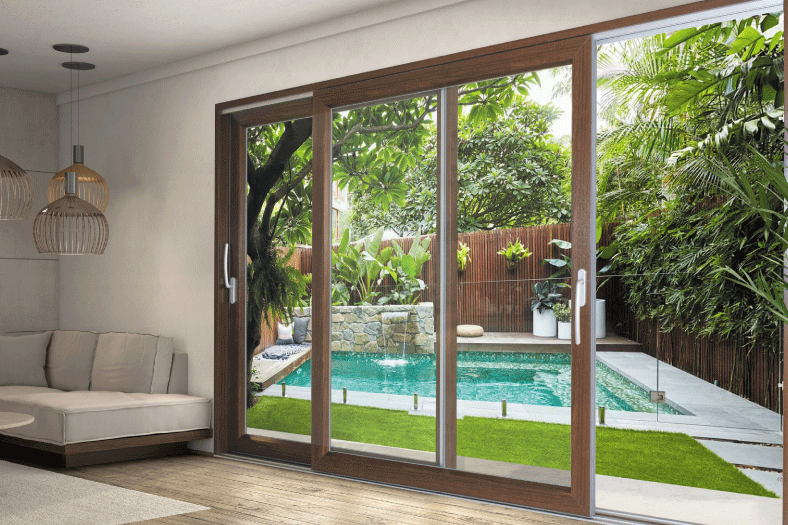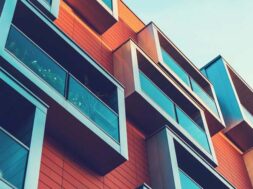Pressing call for eco-friendly doors and windows

Well-designed windows and doors are indispensable in making a structure look alluring as is having eco-friendly doors and windows for maintaining habitable conditions.
The rising population is a challenge for a country like India, where limited land is a problem. Horizontal expansion is limited, so vertical expansion is the only possibility and if we look at the metros, Mumbai is much constrained while NCR, Bangalore and Chennai have their own limitations. To make our homes and offices compliant to nature is the need of the hour, beginning with having eco-friendly doors and windows which can reduce the dependence on power for maintaining habitable conditions in the rooms inside these high-rise structures.
Energy efficiency
According to S P Anchuri, Chief Consultant, Anchuri and Anchuri, the use of dynamic windows and doors can bring numerous benefits in terms of energy efficiency, environmental comfort and architectural quality of buildings. Static solutions with selective glass and fixed or mobile screens do not allow optimising solar gains and light conditions during the year, thus limiting the si e of glazed components in the design phase.
Solutions with automated dynamic sun screens coupled with building automation systems offer excellent energy performance, but have high installation, maintenance and management costs, and hinder the view from the inside to the outside. Dynamic glazing and electrochromic, in particular, instead enable to adjust the amount of incoming light and heat according to the effective need, allowing clasping of a building envelope which is fully able to adapt to the weather conditions such as climate-adaptive building shells and improving the building’s overall performance for every kind of climate, especially in hot climates and Mediterranean countries.
Electrochromic systems also prove more convenient with respect to static systems, thanks to the significant reduction in energy consumption for artificial lighting and air conditioning during summer and winter, with respect to automated screen systems due to lower installation costs as absence of internal and external screening systems, the relative motion devices and the possibility to use lower power air conditioning systems and management. “Now is the time to promote research and application in the field of dynamic high-performance films to be used to retrofit existing windows and in the development of internal self-powering systems and built-in remote control via Wi-Fi for windows and doors,” says Anchuri.
Prof. Charanjit S Shah, Founding Principal, Creative Group, opines that a well-insulated building is an important and cost-effective aspect of efficient heating, ventilating and artificial lighting. To live a comfortable living, buildings should be climate-responsive which, in today’s adverse changing climate, can be achieved by passive techniques, as well as hybrid approaches which also utilise mechanical cooling systems. In a typical home, roughly 30 per cent of heating and cooling is lost through the windows. To maximise the heat loss, natural sources of cooling can be used such as air movement, cooling breezes, evaporation, earth coupling and reflection of radiation. Solutions include using and positioning thermal mass carefully to store coolness, not unwanted heat, choosing climate-appropriate windows and glazing, positioning windows and openings to enhance air movement and cross ventilation, shading of windows, solar-exposed walls and roofs, where possible, using roof spaces and outdoor living areas as buffer zones to limit heat gain. “The size and location of windows should be based on the cardinal directions rather than aesthetic purposes such as south-facing windows that allow most winter sunlight into the home but little direct sun during the summer, especially when properly shaded. North-facing windows admit relatively even natural light, producing little glare and almost no unwanted summer heat gain. East and west facing windows provide good daylight penetration in the morning and evening hours but also admit a lot of heat during the summer,” says Shah.
Avanish Singh Visen, CEO, Encraft India Pvt Ltd, says, “Day lighting design saves energies in many ways. The obvious one is lighting energy, which can represent a major portion of the total energy consumed by many buildings.” According to Visen, day lighting is of two types, viz. side lighting and top lighting. Side lighting products such as doors and windows face the horizon and top lighting products face the sky. Doors and windows provide daylight and solar energy along the perimeter of a building. Here, orientation with respect to the sun’s path is a critical factor. The overriding goal of any day lighting design is how well it uses the available light. However, uncontrolled daylight may result in excessive heat gain and potential discomfort. It is important to ensure that the fenestration is appropriately sized and located and that the correct glazing and accessories are selected. “Use the fenestration area wisely to help insure the energy benefits and balance the costs,” adds Visen.
Mario Schmidt, Managing Director, Lingel Windows and Door Technologies Pvt Ltd, says that doors and windows act as barriers not allowing excess heat to enter in. At the same time they provide natural light to enter in and restrict the use of artificial lighting. “One may not be aware but energy efficient windows help in reducing the consumption of electricity at one’s home,” adds Schmidt. There are various factors that will determine how one can achieve this. One can ensure that there are no cracks or crevices because such openings increase the amount of energy loss. Windows and doors must have a gasket seal that ensures there is no air leakage.
Prem Nath, Chief Executive Officer, Prem Nath & Associates, says, “Architecture is a very interesting field. The design of any structure needs to not only ensure that it is aesthetically well-balanced with the right amount of fenestrations given on the exterior façade and the effect of the same within the interior space. Thus, it is imperative that the doors and windows be planned efficiently, smartly, and aesthetically.”
Nath further adds that windows or glazing planned on the north face of the building shall ensure the best of glare-free north light all through the day, thereby saving on the artificial lighting (electrical) loads; while, by providing the blank walls on the southern face the southern heat and glare is cut-out thereby saving a lot of HVAC load.
Doors with top ventilators ensure that optimum heat shall get ventilated out of the room, while the doors insulate the interiors from the external heat loads along with sound insulation. “The right kind of window size, door thickness, glazing being a DGU or an SGU, all these factors decide on the need of heating, cooling and artificial lighting,” says Nath.
Manish Bansal, Director & CEO, Window Magi India says that in a typical house, 30 per cent of hot and cold breeze escapes through windows and doors. The main reason behind this is air leakage, conduction and convection currents. Installing windows and doors having thermal insulation property can minimise the need of heating, cooling and artificial lighting, while also being energy efficient. These benefits can be availed by choosing the combination of window glaze, insulated frames, multiple panes and tightly-sealed edges.
Eco-friendly components
The increasing attention to issues of visual comfort and energy efficiency that characterise the architecture of the current century led to the development of innovative, high performance dynamic glazing systems, aimed not only at reducing heat loss, but also at controlling incoming solar radiation, in order to maximise solar gain in winter and minimise it in summer, as well as ensuring the best natural lighting conditions with no glare, says Anchuri. Such systems, called smart windows, enable varying the amount of heat (solar heat gain coefficient) and light (visible light transmission) that penetrate through the glass surfaces as needed, while maintaining outwards vision. These new dynamic windows, the electrochromic ones, in particular, are proving to be more effective than traditional static systems – low-emissivity selective glazing and automatic shading devices – at reducing energy consumption for lighting and air conditioning and providing greater comfort to users.
An analysis of the different types of dynamic glazing in the market, with both passive and active control, illustrating their potential uses and the benefits achieved in terms of energy efficiency, environmental comfort, and architectural quality in both new constructions and in existing buildings requalification, is the need of the hour.
In fact, the building envelope plays a pivotal role in the energy performance of a building, significantly affecting the wellbeing levels of the indoor environment. It constitutes a complex system of barriers and environmental filters, not only potentially able to regulate the heat, solar radiation, air and steam flows, but also to convert radiations into energy like heat and electricity and we must emphasise on doors and windows selection too, which are essential for the building metabolism.
Complying with those desired attributes is a tall order for any of the known fenestration materials and UPVC is the only available material which ticks most of the boxes and offers a wide range of benefits like UV protection, sound reduction, energy saving, fire retardant and thermal insulation which makes it the most effective eco-friendly material for doors and windows.
Now is the time to promote research and application in the field of dynamic high-performance films to be used to retrofit existing windows and doors.
S P Anchuri, Chief Consultant, Anchuri and Anchuri
A well-insulated building is an important and cost-effective aspect of efficient heating, ventilating and artificial lighting.
Prof. Charanjit S Shah, Founding Principal, Creative Group
Day lighting design saves energies in many ways. The obvious one is lighting energy, which can represent a major portion of the total energy consumed by many buildings.
Avanish Singh Visen, CEO, Encraft India Pvt Ltd
One may not be aware but energy-efficient windows help in reducing the consumption of electricity at one’s home.
Mario Schmidt, Managing Director, Lingel Windows and Door Technologies Pvt Ltd
In a typical house, 30 per cent of hot and cold breeze escapes through windows and doors because of air leakage, conduction and convection currents.
Manish Bansal, Director & CEO, Window Magic India
While the doors and windows do play a substantial role in sustainability of the project, their components, too, have a factor to play in.
Prem Nath, Chief Executive Officer, Prem Nath & Associates
Cookie Consent
We use cookies to personalize your experience. By continuing to visit this website you agree to our Terms & Conditions, Privacy Policy and Cookie Policy.









